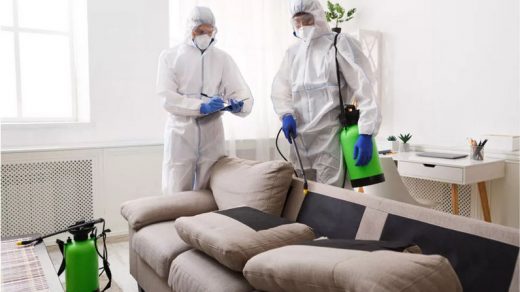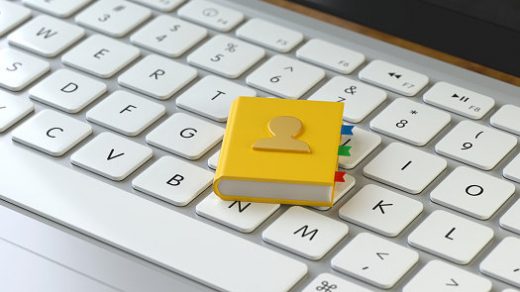In today’s germ-conscious environment, it is more important than ever that property managers and owners provide clean, safe, and healthy spaces. That means taking appropriate measures to clean and disinfect residential properties to get rid of harmful microbes and improve infection control.
Best Practices for Cleaning & Disinfecting
The cleaning and disinfection processes are two separate steps, and both are required to improve infection control. Cleaning removes germs, dirt, and impurities but does not kill germs on surfaces. It does reduce the number of germs and lowers infection risk, but the CDC recommends disinfection as the most effective way to lower the risk of infection. By comparison, disinfection does not clean surfaces but does kill germs on surfaces after cleaning has been completed. So, the key is to clean first and then disinfect.
It helps to create a comprehensive checklist of what needs to be done during each cleaning and disinfection of your residential properties. This ensures you do not miss things that you could if you were to rely on memory. It can also be comforting for guests or tenants to demonstrate that cleaning and disinfection have been completed at a high level.
The Cleaning and Disinfection Process
Both the World Health Organization and the Center for Disease Control[LM1] recommend using detergent or soap and water when cleaning. Give products enough time to clean properly–typically between three and five minutes, before rinsing, drying, and wiping.
When applying disinfectant, surfaces should remain coated and visibly wet for the contact time specified on the product label. If wet surfaces are wiped before the required time to deactivate germs and viruses, they will not do the job.
Prioritize high-touch areas such as door handles, light switches, remote control devices, bathroom sinks and fixtures, toilets and flush handles, garbage bins, and furniture. If you provide linens, utensils or kitchenware, they should be disinfected even if they appear unused.
Cross-Contamination
Cross-contamination can easily occur if you fail to take precautions. This can undo all the work you have done to disinfect your residential property. You can prevent cross-contamination by following these guidelines:
- Complete all cleaning tasks before disinfection. For example, empty trash cans and complete. vacuuming and mopping in all areas before beginning room-by-room disinfection.
- Isolate equipment by area. In other words, use different cleaning equipment for bathrooms, kitchens, and bedrooms.
- Save the dirtiest areas for last.
- Disinfect surfaces from the highest to the lowest so anything that is loosened and drops from higher surfaces will be covered when you disinfect the lower surfaces.
Equipment Usage
The equipment you use and how you use it play a significant role in avoiding cross-contamination and ensuring safe application.
- Cleaning equipment should be cleaned and disinfected before and after use to mitigate the risk of contamination.
- Single-use equipment should be disposed of immediately after use
- Proper personal protective equipment (PPE) should be used while cleaning and disinfecting.
Cleaning and Disinfecting Supplies
Only cleaning supplies on the EPA’s registered list of disinfectants for control of viruses and bacteria should be used to provide the best infection control.
- Never mix household bleach with ammonia or any other cleaner. When mixed, it can create toxic chlorine gas.
- Follow the manufacturer’s instructions, including concentrations, applications, and contact time. Disinfectant has a specific kill time it needs to do its job.
- Make sure you have the proper ventilation during and after application.
Training
Residential property managers should only work with commercial cleaning companies that provide training and best practices on:
- How to properly use PPEs
- OSHA safety protocols
- CDC disinfection recommendations
- Proper use and disposal of cleaning products
- Use of any specialized equipment, such as electrostatic sprayers
Cleaning and Disinfecting Between Tenants
Before anyone moves into one of your properties, you should hire a commercial cleaning company to conduct a thorough cleaning regardless of anything the previous occupants – or their cleaners – have done so you have the peace of mind that the job was done correctly and to your standards. This will also help incoming tenants feel better about moving in and reduce potential liability.
The CDC recommends that you waiting at least 24 hours after the previous tenants leave before cleaning and disinfecting[LM2] . Property managers may also want to do a deep cleaning before letting new tenants move in.
You may also want to consider the use of electrostatic spraying for an even deeper level of disinfection. Electrostatic spraying uses charged particles that bond to and surround surfaces in a way manual cleaning cannot. It is an affordable and fast disinfection solution for advanced infection control and can disinfect properties up to four times faster than manual disinfection. It can also be used to provide immediate infection control in case of an outbreak.
About OpenWorks
OpenWorks delivers commercial cleaning and facilities management services through its elite network of nationwide service providers that consists of operators that take pride in creating cleaner, safer, and healthier facilities.
Contact OpenWorks today to request an estimate on cleaning and disinfecting services for your residential properties.




Recent Comments